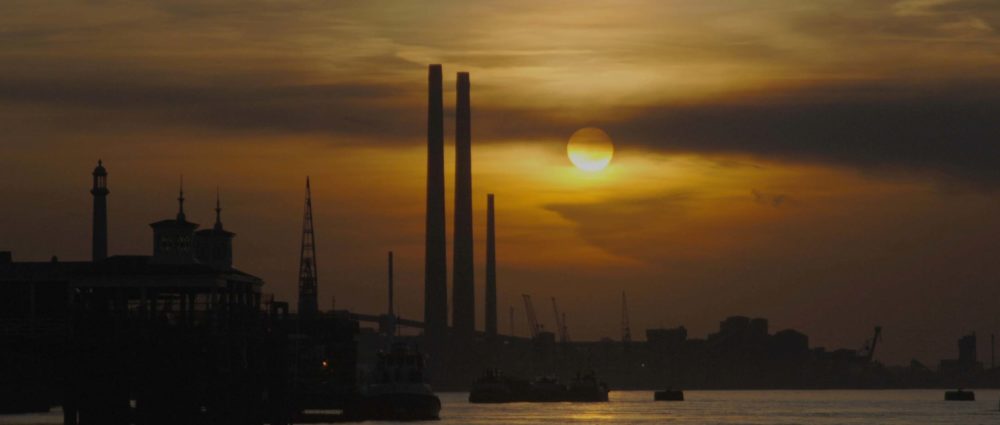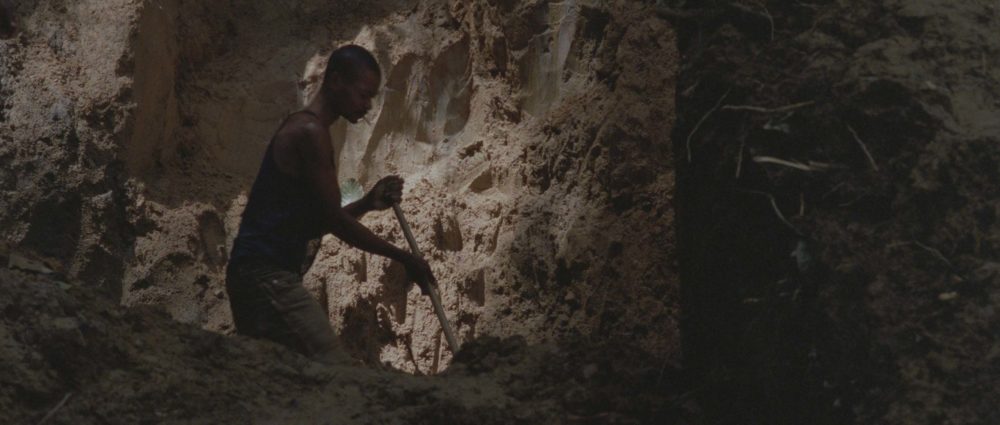
followthethings.com
Electronics
“Gravesend, 2007“
An art work / short film by Steve McQueen premiered at the Venice Biennale and exhibited at the Renaissance Society in Chicago, USA in 2007 and at the Uneven Geographies exhibition at the Nottingham Contemporary Gallery, UK in 2010.
Gallery photo above. Renaissance Society exhibition photos here. Acquired by the Museum of Modern Art, New York, USA here. Not available to watch online.
After a decade of rare earth metal mining in the Democratic Republic of the Congo for use in the growing consumer electronics sector, and recognising the history of African colonial plunder artist Steve McQueen sets out to make a short film that brings this story into one piece of art work. He travels between the coltan mines of the DRC and a coltan processing facilities in the UK. The miners, sometimes children, dig coltan from muddy trenches. This is brutal and poorly paid work wrecks the environment and funds a civil war in which 4 million people have lost their lives. The specialist metals which emerge from this ravaged place are perfect ingredients for modern consumer electronics, because they can conduct electricity without getting too hot. McQueen visits a pristine, computerised factory facility in the UK where this coltan ore is processed. The film he makes out of these loaded and shockingly different elements is described by critics and viewers as abstract, poetic, animated (sometimes), deafeningly loud (sometimes), beautiful, intense, opaque, meditative, melancholy, that works though ‘phenomenological estrangement’, has no titles or narration and scenes and moods that leap between places and dissolve into one another. The coltan miners appear in it as ‘ghostly absences of light’. For McQueen, this isn’t a documentary film. It doesn’t give supply chain workers a voice. It’s a film about looking. It takes its name from a town in the British county of Kent, which sits on the banks of the River Thames where Joseph Conrad’s Heart of Darkness book begins. You can only watch it in an art gallery when it’s being exhibited. Some commenter are impressed with its intellectual purpose and depth, while others say they need to read the museum brochure to understand what it’s about (e.g. coltan). It seems from what people say that this isn’t an activist film or art work. It’s not setting out to motivate its viewers to understand and to act. But it is, for some, intensely haunting. Maybe you have to be there, watching it in that gallery space, with other people, other art work, the signage, the space, the lighting. This is a space where its viewers to ‘make the necessary connections.’
Page reference: Tom Bollands, Alistair Brouard, Amelia Cozon, James Hornsby, Phoebe Park & Louise Richardson (2024) Gravesend, 2007. followthethings.com/gravesend.shtml (last accessed <insert date here>)
Estimated reading time: 25 minutes.
Continue reading Gravesend, 2007 ![]()



